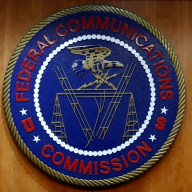As consumer awareness of recycling and sustainability grows, the market is being inundated with eco-friendly products and processes. But is that green product you’re putting in your shopping cart truly green – or are you, the shopper, being “greenwashed?”
“Greenwashing is making statements about the environmental attributes of a service or product that are either false or misleading,” says Eric Boyd, an environmental lawyer with Seyfarth Shaw, a major American law firm now specializing in green compliance.
“My practice has been to help companies make sure they don’t get in trouble under the Federal Trade Commission Green Guides, which prohibit false and misleading advertising.”
Boyd guides his clients – including Canadian building-materials firms – through the maze of legal definitions of recyclability, compostability, degradability and other key concepts of environmentally conscious sustainability.
With demand for greener products steadily on the climb, this has become a matter of significant importance for shoppers, and therefore for all companies competing for their cash.
“Consumer desire drives everything,” Boyd says. “It drives the Walmarts of the world to require their suppliers to have green attributes in their products. And suppliers are not always sure what those words mean – or what they have to do to substantiate them.”
This is particularly true in the construction industry – on both sides of the Canada-U.S. border.
“LEED certification – gold, silver, platinum – is basically a sustainability measure for buildings,” Boyd notes. “To get points for that certification, you get credit for things like recycling rain water and green roofs, but also for your building materials – if they’re recyclable or made from recycled content. That is pushing suppliers to the building trades to come up with new products and services that meet those criteria.”
So – how can you spot greenwashing?
“I’ll give you a hint,” Boyd says. “If the general claim – that this is environmentally preferable, or this has eco-benefits, or there’s a green seal or something – you can always check the marketing materials or on their website to see if there’s more detail. One of the things the law requires is that companies substantiate general environmental claims. That substantiation should be available somewhere.”
That requires Boyd and his colleagues to do some detective work, ensuring that any company they advise is making legitimate green claims.
“I like this area of law because it pulls all sorts of things together,” Boyd concludes.
“In the environmental world, for so long, we’ve been sort of command and control – how much pollutant can go in the air, the water, what have you – and how do you regulate that? Moving more toward a product-driven approach, people are looking more at life cycle and things like that. People are more concerned about the things they consume, eat and wear. This sort of product focus on the green marketing side brings it all full-circle.”
















